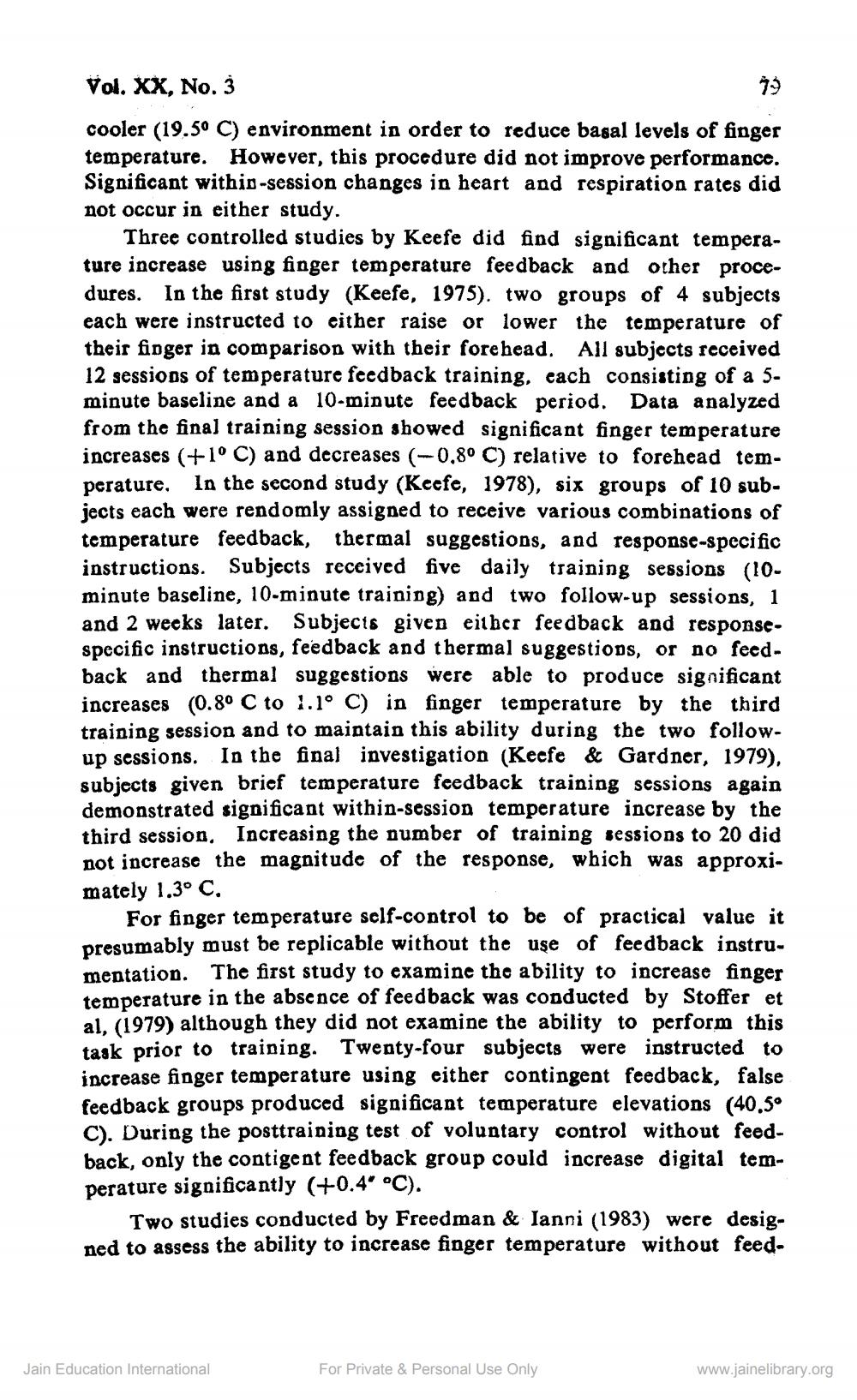________________
Vol. XX, No. 3
79
cooler (19.5° C) environment in order to reduce basal levels of finger temperature. However, this procedure did not improve performance. Significant within-session changes in heart and respiration rates did not occur in either study.
Three controlled studies by Keefe did find significant temperature increase using finger temperature feedback and other procedures. In the first study (Keefe, 1975). two groups of 4 subjects each were instructed to either raise or lower the temperature of their finger in comparison with their forehead. All subjects received 12 sessions of temperature feedback training, each consisting of a 5minute baseline and a 10-minute feedback period. Data analyzed from the final training session showed significant finger temperature increases (+1° C) and decreases (-0.8° C) relative to forehead temperature. In the second study (Keefe, 1978), six groups of 10 subjects each were rendomly assigned to receive various combinations of temperature feedback, thermal suggestions, and response-specific instructions. Subjects received five daily training sessions (10minute baseline, 10-minute training) and two follow-up sessions, 1 and 2 weeks later. Subjects given either feedback and responsespecific instructions, feedback and thermal suggestions, or no feedback and thermal suggestions were able to produce significant increases (0.8° C to 1.1° C) in finger temperature by the third training session and to maintain this ability during the two followup sessions. In the final investigation (Keefe & Gardner, 1979), subjects given brief temperature feedback training sessions again demonstrated significant within-session temperature increase by the third session. Increasing the number of training sessions to 20 did not increase the magnitude of the response, which was approximately 1.3° C.
For finger temperature self-control to be of practical value it presumably must be replicable without the use of feedback instrumentation. The first study to examine the ability to increase finger temperature in the absence of feedback was conducted by Stoffer et al, (1979) although they did not examine the ability to perform this task prior to training. Twenty-four subjects were instructed to increase finger temperature using either contingent feedback, false feedback groups produced significant temperature elevations (40.5° C). During the posttraining test of voluntary control without feedback, only the contigent feedback group could increase digital temperature significantly (+0.4 °C).
Two studies conducted by Freedman & Ianni (1983) were designed to assess the ability to increase finger temperature without feed
Jain Education International
For Private & Personal Use Only
www.jainelibrary.org




